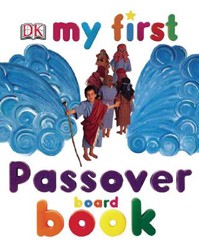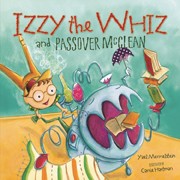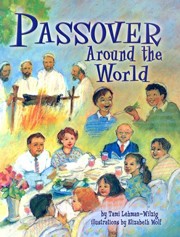Following their successful venture in The Story of Hanukkah (2011), Adler and Weber have again teamed up to create a straightforward and visually dramatic retelling of a Jewish holiday story based around themes of historical injustice and religious freedom. The familiar Pesach narrative about the Jews’ exodus from Egypt is written in a style that is both simpler and less contextual than Adler’s A Picture Book of Passover (1982), conveying all of the important and expected details of the tale without sentimentality. “To the Pharaoh, the ruler of Egypt, the Children of Israel were outsiders. He was afraid that one day they would rebel. To control them, he made them slaves.” The spare text is enhanced by acrylic illustrations in a child-like folk-art style that conveys both the gravity and excitement of the story. Here is where the drama of the Passover is brought vividly to life, from the whipping of the Hebrew slaves and the mourning of the mothers of the first born, to the spectacle of the Ten Plagues and the parting of the Red Sea. It is this combination of uncluttered narrative and visual expressiveness that makes the book so accessible, particularly for children who might not already be familiar with the Passover holiday. A solid choice for Jews and non-Jews alike. Includes a page describing the elements of a Seder.

Children’s
The Story of Passover
- Review
By
– April 1, 2014
Teri Markson has been a children’s librarian for over 18 years. She is currently the acting senior librarian at the Valley Plaza Branch Library in North Hollywood, CA.
Discussion Questions

Jewish literature inspires, enriches, and educates the community.
Help support the Jewish Book Council.



